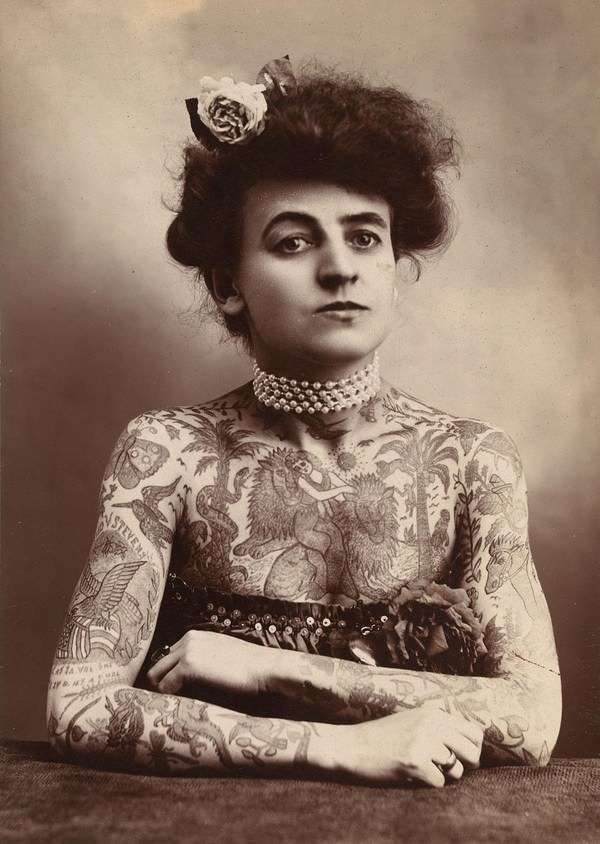The Rise and Fall of the New York City Tattoo Ban
How government regulators tried to kill the skin & ink trade.

This weekend the Roseland Ballroom in midtown Manhattan will play host to the 17th Annual New York City Tattoo Convention, a three-day event featuring hundreds of artists from around the world. Attendees will have the opportunity to get inked, get pierced, or simply gawk at a wide assortment of colorfully adorned bodies. It's a weird and wonderful display of what the philosopher Robert Nozick once called "capitalist acts between consenting adults."
Yet if the same convention had been staged in the same location just two decades earlier, every tattooist at work could have been arrested on the spot. That's because, in 1961, New York City declared it "unlawful for any person to tattoo a human being," a prohibition that remained on the books for nearly four decades, until the city finally re-legalized the tattoo trade in 1997.
The story of New York City's tattoo ban presents the classic case of government regulators using a bogus public health pretext to hound an unpopular activity out of existence. Pointing to a non-existent link between tattooing and a minor outbreak of Hepatitis B, city health officials went on the attack, declaring, "the tattoo industry, from a public health point of view…[is] not regulatable." According to the government, only a total ban would save the citizenry.
Fred Grossman, a tattooist who worked out of a shop in Coney Island, brought suit, charging the city with an illegitimate exercise of power. But when his case finally reached the courtroom, Grossman hit the brick wall of judicial deference to government regulation.
According to state appellate Judge Aron Steuer, "what is harmful or injurious is a matter for the Legislature rather than the courts." Besides, the judge added, "the decoration, so-called, of the human body by tattoo designs is, in our culture, a barbaric survival, often associated with a morbid or abnormal personality." Tattooists would find no refuge in Steuer's courtroom.
Grossman next appealed to the state's highest court, but he met with an equally dismissive judiciary. "In its wisdom, the board in the case before us decided that the prohibition of lay tattooing was essential for the protection of the public health," the court ruled in Grossman v. Baumgartner (1966). Because "the police power is exceedingly broad…the courts will not substitute their judgment of a public health problem for that of eminently qualified physicians in the field of public health."
As an authority for that position, New York's highest court cited the U.S. Supreme Court's 1938 opinion in the landmark New Deal case of United States v. Carolene Products Co. At issue there was a federal law prohibiting the interstate shipment of so-called filled milk, which is basically a skim milk product made with oil rather than milk fat. In the eyes of dairy farmers, filled milk was an unwelcome competitor, prompting the dairy industry to lobby aggressively for the federal restriction. Congress soon obliged, denouncing filled milk as "an adulterated article of food, injurious to the public health."
Writing for the Carolene Products majority, Justice Harlan Fiske Stone sided with the lawmakers. When it came to "regulatory legislation affecting ordinary commercial transactions," Stone held, "the existence of facts supporting the legislative judgment is to be presumed." In other words, the courts must defer to lawmakers in all disputes between the government and an entrepreneur or business owner challenging an economic regulation on constitutional grounds.
Unsurprisingly, that deferential approach spelled doom for New York City's tattoo artists, who remained outlaws until the ban was finally lifted in 1997. What prompted the change? As Mayor Rudolph Giuliani observed in March of that year, "operation of a tattoo establishment in New York City is illegal, however such establishments do currently operate in the City without regulations." And even though such tattooing had been going on in the shadows, "there has not been a single documented case of Hepatitis B in New York City transmitted by tattooing in almost 40 years since the ban was enacted." Legalization was long overdue.
To be sure, tattooing never should have been made illegal in the first place, and the state courts should have done their jobs by overruling the capricious legislation. But at least the city finally came to its senses. That's more than can be said for many other government actions.




Show Comments (210)